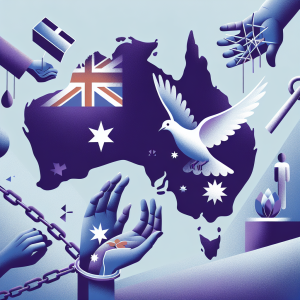Beyond the Shadows: A Spotlight on Domestic Violence During Awareness Month
Introduction:
Domestic violence, also known as intimate partner violence, is a deeply concerning issue affecting millions of individuals across the globe. It is a pervasive problem that occurs in all cultural, socioeconomic, and religious backgrounds. Every October, Domestic Violence Awareness Month is observed to shed light on this issue, raise awareness, and show support for survivors. In this article, we will delve into the significance of Domestic Violence Awareness Month, explore the realities of domestic violence, and provide valuable information to help combat this social problem.
Understanding Domestic Violence:
1. What is domestic violence?
Domestic violence refers to a pattern of behavior that is used to establish control and power over an intimate partner or family member. It can include physical, sexual, emotional, economic, or psychological abuse. Domestic violence is not limited to any gender; it can affect both men and women.
2. Why is it important to shed light on domestic violence?
Domestic violence is often a hidden crime, occurring within the secrecy of homes and behind closed doors. Shedding light on this issue during Awareness Month helps to bring it out of the shadows and encourages survivors to seek help. It also raises awareness among the public, educating them about the signs, prevention methods, and available resources.
3. What are the signs of domestic violence?
Signs of domestic violence can vary, but some common indicators include physical injuries, frequent absences from work or social events, constant fear or anxiety, mood swings, and controlling behavior from their partner. Additionally, financial dependence and isolation from friends and family can also be warning signs.
The Realities of Domestic Violence:
1. How prevalent is domestic violence?
According to the World Health Organization, approximately 1 in 3 women worldwide has experienced physical and/or sexual violence perpetrated by an intimate partner or sexual violence by a non-partner in their lifetime. Additionally, men can also be victims of domestic violence, with estimates suggesting that around 1 in 4 men have experienced intimate partner violence.
2. What are the impacts of domestic violence?
The effects of domestic violence are far-reaching and can have severe and long-lasting consequences. Survivors often suffer from physical injuries, mental health issues such as anxiety and depression, post-traumatic stress disorder (PTSD), and may engage in harmful coping mechanisms like substance abuse. Children who witness domestic violence are more likely to experience behavioral problems and have an increased risk of becoming victims or perpetrators themselves in the future.
Taking Action and Seeking Help:
1. How can we support survivors of domestic violence?
Supporting survivors of domestic violence involves providing a safe and non-judgmental environment for individuals to share their experiences. We should listen to them, validate their feelings, and refrain from placing blame. Encouraging survivors to seek professional help from shelters, counseling services, or hotlines is vital. Volunteer or donate to domestic violence organizations, attend awareness events, and engage in advocacy efforts to address the root causes of domestic violence.
2. What resources are available for survivors?
Various resources are available for survivors of domestic violence. National hotlines, such as the National Domestic Violence Hotline in the United States (1-800-799-SAFE), provide immediate assistance and information. Local shelters, counseling services, and legal aid organizations can offer support tailored to the specific needs of survivors. It is crucial to research and locate resources available in your community that can help survivors on their journey towards safety and healing.
Conclusion:
Domestic Violence Awareness Month serves as a reminder that we must unite against all forms of domestic violence. It compels us to look beyond the shadows and acknowledge the prevalence of this issue. By understanding the signs, supporting survivors, and advocating for change, we can contribute towards creating a society free from domestic violence. Let us stand together and shed light on this critical issue, fostering empathy, education, and empowerment.
FAQs:
1. How can domestic violence be prevented?
Prevention can be achieved through education, raising awareness, and promoting gender equality. By teaching young individuals about healthy relationships, consent, and respect, we lay the foundation for preventing domestic violence in the future. Additionally, legislation providing legal protection for victims, supporting survivors, and holding abusers accountable is crucial in addressing the problem holistically.
2. Are there any long-term initiatives to combat domestic violence?
Numerous long-term initiatives are being undertaken globally to combat domestic violence. These include education programs in schools, community outreach campaigns, and research to better understand the dynamics of domestic violence. Many countries have also implemented protective laws and policies, established rehabilitation centers, and domestic violence units within law enforcement agencies to ensure ongoing support for survivors.
3. How can I help someone I suspect is experiencing domestic violence?
If you suspect someone is experiencing domestic violence, it is important to approach them delicately and without judgment. Express your concern for their well-being, let them know you are there to support them, and provide information about available resources. However, it is crucial to respect their decision if they are not ready to disclose or take action. Encourage them to keep themselves safe and seek professional help when they are ready.





















